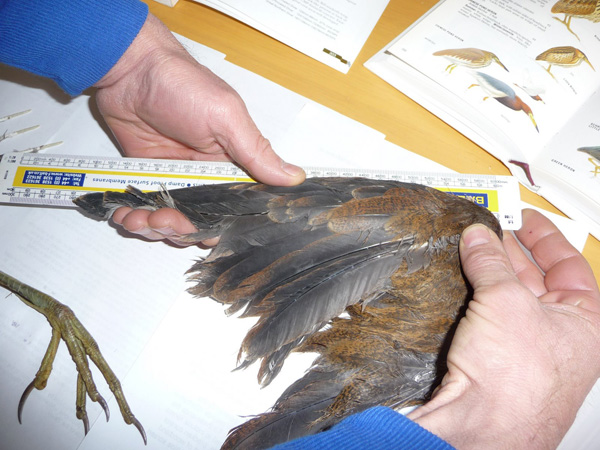American Bittern - 2008
 Friday, January 24, 2014 at 8:50AM
Friday, January 24, 2014 at 8:50AM On the morning of the 1st December, I was out with Janet Atkinson carrying out a winter TTV for the Atlas, when Robin phoned. Robin got to the point quickly, he had been out yesterday and picked up the remains of a bird, which after cleaning up, he thought was an American Bittern! As the bird was dead, I told Robin we would be with him as soon as we could, but we would finish the survey first.
I had little doubt that Robin would be wrong iwth his identification. I had recently spent three weeks sharing a room with him in Madagascar and was aware of his keenness to collect thing and his desire to idenfity everything! From shells to seeds, from chameleons to lemurs, as well as birds.
St David's Airfield, long disused (no more of the theory the bird came in by plane) has been left to return to marshy heath and is managed by the Pembrokeshire Coast National Park. Robin was looking for waterfowl in a particularly wet area to the north of the runways and came across a bedraggled, partly decomposed bird. The the legs and long bill were clearly visible, suggesting a bittern-type bird. Robin, a collector of "things" decided to take bits of the bird home - he wished now of course that he had taken the whole corpse if that had been possible. But not suspecting a mjor rarity, "pieces" were taken. The head including bill (badly decomposed), one leg, and one very black slimy wing.
Back at home, Robin started to clean up the pieces, the leg was easy, the head and bill were cleaned chemically to leave the skull/bill. The skull/bill fitted a diagram of a bittern species in the literature. But it was the wing that was the revelation! If it was a Eurasian Bittern, the flight feathers would be strongly barred. This is what he expected but, on cleaning, it was obvious that they were black, with some feathers tipped with a rusty brown. The greater coverts being this rusty colour and the primary coverts tipped this colour too.
The wing pattern fitting the illustrations of an American Bittern.
On viewing the bird's parts I agreed that we had an American Bittern, measurements were taken, including had/bill, leg and the primary length, all of which supported the diagnostic wing pattern. I posted a photo of the wing on PembsBirds, the county blogsite and amazingly we had 900 hits to this site in the next 36 hours. How popular the bird would have been if seen alive.

The bird presumably arrived a few weeks earlier in the autumn, perhaps soon after the Blackpoll Warbler, which only one lucky person saw. This is (BBRC acceptance required) the fourth record of American Bittern for Pembrokeshire. 1972, 1905 both shot, in 1946 one seen on Ramsey Island, which is off the end of the St David's Peninsula where the airfield resides.
Richard Dobbins
Pembrokeshire Bird Report 2008
 rare in
rare in  American Bittern
American Bittern 

